The impacts stretch beyond inflation and corporate retreats to critical shortages upstream for semiconductor and EV supply.
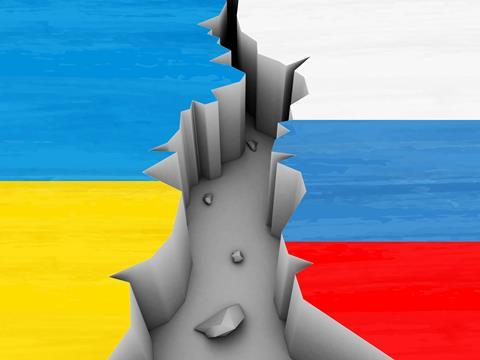
Russia’s ongoing war against Ukraine is first and foremost a human tragedy and has fast developed into a humanitarian crisis.
But it is also apparent that in an increasingly globalised and interconnected supply chain, the conflict’s ramifications will profoundly impact reshape geopolitics, economies, trade and the trajectory of the automotive industry for years if not decades to come.
Immediate supply chain disruption
Component, material and energy supply chains were already in a fragile recovery phase following disruptions from the Covid-19 pandemic and subsequent semiconductor shortages. The Ukraine crisis has severely compounded those difficulties. It has impacted vehicle production not only in the Ukraine and in Russia but has also destabilised supply of components for other factories in other parts of Europe and beyond – with other risks as well in the upstream supply chain.
For example, there has been a total suspension in production at the ’Eurocar’ plant in Solomonovo, Ukraine, which assembles the Skoda Fabia, Superb, Karoq and Kodiaq for local markets. In Russia, there have been reports of component shortages causing production stoppages. Hyundai has suspended production at its St. Petersburg plant due to component shortages. Toyota halted production at its plant also in St. Petersburg because of disruptions to its supply chains. Avtovaz, which is majority-owned by Renault Group, is reported to have stopped production following disruptions (though it appears to have restarted). Renault, which has a factory in Moscow, was also reported to be affected.
Other European OEMs have also made the decision to stop production and operations in Russia as part of a wider corporate retreat, including the Volkswagen Group, BMW and Mercedes-Benz. Ford and General Motors had already pulled out of Russia or plan to wind down operations. Many more are set to follow.
The impacts are also being felt further afield, demonstrating the interconnectedness of supply chains. The VW plant in Zwickau, Germany has had to suspend production because of shortages of wiring harnesses sourced from suppliers in and around Ukraine. In the Czech Republic, Skoda has reported critical shortages of components from suppliers in Ukraine, which has limited production of the Enyaq IV. Even in the UK, the BMW Cowley plant in Oxford has had to halt production of the Mini because of components shortages triggered by the Ukraine crisis.
In terms of suppliers, Leoni, a wiring supplier in Ukraine has idled plants there, and is instead supplying OEMs from its plants in other countries. Magna has suspended operations in Russia, where it has six plants.
There are likely to be much more challenging trading conditions for vehicle manufacturers automotive suppliers and stakeholders across the supply chain. Plant stoppages, combined with supply chain disruption, port closures and restricted transit routes across Europe are likely to become the norm in the coming months and beyond. That combined with spiking prices in energy and commodities because of blockages, sanctions or trade bans are only going to increase volatility for supply chain managers.
Energy supply shocks
The international consensus by many economies to apply severe economic and financial sanctions on Russia has been unprecedented and amounts to an economic war – and one that will have profound and worrying implications for the global economy and the automotive supply chain.
It’s a high stakes gamble. While NATO allies may have few non-military options other than to crash the Russian economy, it also brings with it considerable risks, including unleashing even higher levels of inflation, an economic shock triggering a recession, stock market crash or even a major period of economic depression. The resulting increases in unemployment and pain felt by consumers would harm economies in the West as well as Russia, and ultimately weigh significantly on the automotive industry.
The most significant economic impact is likely to be felt in energy supply. Russia is a major exporter of gas and the world’s second largest oil exporter. The conflict has already caused wholesale gas prices to surge to more than 10 times ‘normal’ levels and the price of oil has now exceeded $120 per barrel. At the time of writing oil and gas exports from Russia have been exempt from sanctions – however, challenges in paying for Russian gas and oil is part of the reason for the price rises.
There has also been talk at the highest political level by the US and NATO allies of applying an embargo on Russian oil to cut off its main source of income. US president Joe Biden has said the US would ban imports of Russian oil and gas, with the UK government announcing that it would also phase out Russian oil by the end of 2022 (an announcement on gas is expected soon). The EU, which depends much more heavily on Russian gas, has announced a plan to phase out its use by 2030. Oil and gas prices are likely to rise even higher as supply is diverted from other sources and businesses and consumers scrambled to reduce consumption. Russia could also retaliate by cutting off vital gas supplies to Europe, as its government has already threatened. It would be a very painful transition and appears less likely to happen in the short term in Europe, with opposition already voiced from Germany. The transition away from Russian oil and gas will require not only more renewable energy sources but also increasing supply from elsewhere, for example by asking OPEC to increase output – though that too is fraught with political difficulties.
Plant stoppages, combined with supply chain disruption, port closures and restricted transit routes across Europe are likely to become the norm in the coming months and beyond. That combined with spiking prices in energy and commodities because of blockages, sanctions or trade bans are only going to increase volatility for supply chain managers.
Natural gas price spikes also clearly impact LNG prices. Increasingly, manufacturers and logistics operators have been turning to LNG to reduce emissions compared to diesel, including in the maritime sector and for larger commercial vehicles. There are efforts to expedite investments in LNG shipping, ports and facilities to localise supply and achieve better energy security – potentially with more LNG sourced from North America, or the Middle East, instead of Russia. But these transitions will also take time.
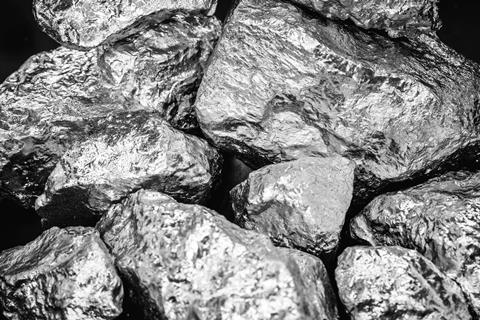
Impacts on chip and EV supply chains
While impacts from the price of gas and energy are already apparent, the conflict has revealed more about the role that both Russia and Ukraine play in the upstream supply chain of key minerals which impact on production of vital components like semiconductors and batteries.
For example, Russia is a major exporter of aluminium, steel, palladium and nickel. Palladium is a rare metal used in semiconductor production and catalytic converters for ICE vehicle exhaust systems. Russia produces up to 45% of the world’s palladium, with the Ukraine also a significant supplier of the metal.
Russia also produces a large proportion of the world’s nickel, a metal used in lithium-ion batteries for electric vehicles. (Read more on the value chain for lithium-ion batteries.)
Ukraine also produces much of the world’s neon gas, which is used in around 75% of the lasers that etch circuits onto semiconductors. Neon gas is a by-product of steel production on the type of older, unmodernised plants usually found in Russia and Ukraine, hence there is not an easy substitute elsewhere, apart from China which has relied on a supply of neon gas.
Sanctions on export controls of sensitive technology to Russia, including semiconductors, could seriously damage Russian vehicle production. Intel, Nvidia and TSMC have agreed to follow the sanctions. Semiconductor prices have not yet risen because of neon gas or palladium shortages, but that is only because of the long lead times in chip manufacturing. The industry will likely face another squeeze in cost and supply in the coming months.
OEMs retreat from Russia
The collective decision to suspend operations in Russia because of the invasion has been a striking characteristic of the crisis thus far, as OEMs take an ethical stance against the violence. Most have suspended production, exports and sales in Russia until further notice, including Aston Martin, Bentley, BMW, Daimler Trucks, Ford, GM, Honda, Hyundai, Jaguar Land Rover, Mercedes, Nissan, Porsche, Stellantis, Toyota, Volvo Cars and VW Group.
In practice, automotive manufacturers might have had little choice. Most would have struggled to operate in Russia because of sanctions, the collapse of the rouble, difficulties in making payments, supply chain and logistical difficulties. Doing business in Russia would also bring reputational risk because of public backlash. In most cases, the revenues and profits that automotive companies derive from Russia are no more than a few percentage points globally. And with shortages of vehicle inventory and supply to other, larger markets, pulling out of a minor market such as Russia could even help redivert some supplies elsewhere.

A notable omission from the above list is Renault (a carmaker 15% owned by the French government), which is also the OEM most exposed in Russia. Renault has a 51% stake in Avtovaz, which has a plant in Togliatti that assembles Ladas, 90% of which are sold within Russia. Russia is the Renault Group’s second largest market and contributes around $5.5 billion, or 12%, to its balance sheets.
Consequently, the French OEM’s share price has slumped since the crisis as investors fear that the sanctions, which include capital controls, may even prevent Renault from accessing revenues or profits, and forcing it to downgrade its financial forward guidance. But for Renault to sever its ties with Avtovaz would be politically difficult and a huge financial loss given the $2 billion that Renault has invested in the venture. The collapsing Russian economy is likely to mean that demand for Ladas will decline sharply and Avtovaz falls back into losses, leaving no easy way out for Renault.
Inflation – what happens as cars get more expensive
If the price of energy, components and logistics all increase sharply, then vehicle prices will rise commensurately with profit margins also squeezed. The result will be lower vehicle sales and damage to the wider automotive industry.
And if rampant inflation continues to drive the price of energy, commodities, food, and vehicles, then central banks will be forced to reign that in by further raising interest rates. This is the spectre of the so-called ‘stagflation’, with economic stagnation at the same time as high inflation. If inflation erodes into people’s disposable income, then they increasingly have less to spend on discretionary purchases items such as cars.
If oil prices continue to stay high – and all the signs are that this is going to be the new normal – then rising fuel prices will bring into question the viability and attractiveness of car use for many people on lower incomes. Interestingly, because the US has lower fuel taxation rates compared to other parts of the world, the American market is in many ways even more exposed to oil price rises than in Europe, where 60-70% of fuel prices is taxation. Consequently, there are already signs that consumers are stockpiling fuel in fear of future price rises.
Impact on electrification: a risk, but also opportunity for governments
The conflict could even have long-term implications for the growth of vehicle electrification. The Ukraine crisis will make the sourcing of the critical materials necessary for electrification more difficult: namely nickel, lithium, palladium, semiconductors and neon gas. Shortages of these materials might not only cause disruption and limit production, but potentially affect the ability of OEMs in the shift to EVs (which require more semiconductors than ICE and rare metals in the batteries).
Such disruption brings into questions the entire viability of meeting various CO2 emissions regulations, fuel consumption targets and national ICE bans.
However, with oil prices set to remain high for the foreseeable future, the consumer case for switching to electric vehicles will also rise, too. This growth in demand, coupled with supply chain disruption, would add to a growing imbalance between EV supply and lead to longer production and delivery times for consumers.
Should this demand rise, western governments could use the opportunity to accelerate the transition to renewables and net zero across all industries including automotive, like what some governments in Europe did in the wake of the Covid crisis. That would include maintaining targets and increasing stimulus, incentives, support and investment to align the goals of Russian sanctions, energy independence and climate change mitigation.
Should [EV] demand rise, western governments could use the opportunity to accelerate the transition to renewables and net zero across all industries including automotive, like what some governments in Europe did in the wake of the Covid crisis.
The bottom line for the automotive supply chain
What does all this mean for automotive volumes and the future industry outlook?
Russia’s invasion of Ukraine brings the risk of serious macroeconomic impacts: a slowing of economic growth, even higher inflation, possibly even stagflation, rising unemployment and falling consumer confidence.
A highly protracted conflict would likely lead to a downward revision of sales volume forecasts. The effect of ongoing hostilities against Ukraine and the geopolitical repercussions of that – sustained sanctions, trade bans, supply disruption, higher military spending – means that the Ukraine crisis could have as great or even a longer-term global economic impact than the Covid crisis and its aftermath. At a minimum that would mean even more fragile supply chains for the foreseeable future, and lower sales and production volume over the next decade. But there could ultimately be an accelerated transition to energy independence and electrification – depending on how governments react.
Russia-Ukraine crisis: key impacts for the automotive supply chain
- Global vehicle production and demand volumes revised downwards, potentially over the long term
- Reduced production and demand volumes in countries in and adjacent to the conflict area but less severe affects across western Europe and global markets
- The rise in oil and commodity prices will have a significant impact on higher inflation
- Disruption on already distressed supply chains likely to be greatly exacerbated, including for semiconductors and catalytic converters
- Disruption to freight routes: port closures and shipping lines divert from Black Sea and Russian ports; airspace effectively closed over Russia, Belarus and Ukraine; China-Europe rail and landbridge suspensions
- Key materials shortages potentially a barrier to the transition to electrification
- Growing mismatch of EV inventory if demand rises with higher oil prices but supply is hurt by supply chain constraints
- Governments may further incentivise transition from Russian oil and fossil fuels with increased support and stimulus for EV sales and production
Daniel Harrison is automotive analyst for Automotive from Ultima Media, the business intelligence arm of Automotive Logistics. He will publish an upcoming report forecasting the volume impact and powertrain mix outlook in April: Global Automotive Powertrain Forecast 2018-2035. For more information, contact us.
Topics
- Analysis
- Battery Supply Chain
- Daimler Trucks
- Editor's pick
- Electric Vehicles
- Emergency logistics
- Europe
- Finished Vehicle Logistics
- Flash analysis
- Global business intelligence
- Home Page
- Inbound Logistics
- Inventory management
- Leoni
- Magna
- News
- News and Features
- OEMs
- Opinion
- Policy and regulation
- Ports and processors
- Renault
- Russian Federation
- Semiconductors
- Skoda
- Suppliers
- Supply Chain Planning
- Trade & Customs
- Ukraine
- Volkswagen

























![Global[1]](https://d3n5uof8vony13.cloudfront.net/Pictures/web/a/d/s/global1_726550.svgz)




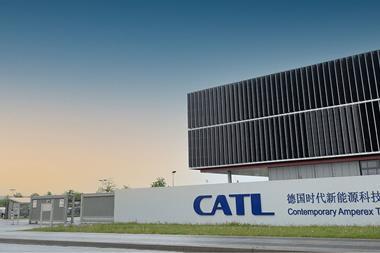
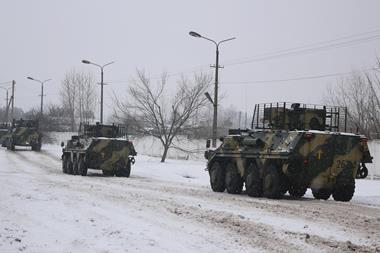
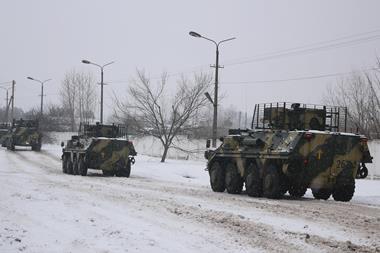






No comments yet